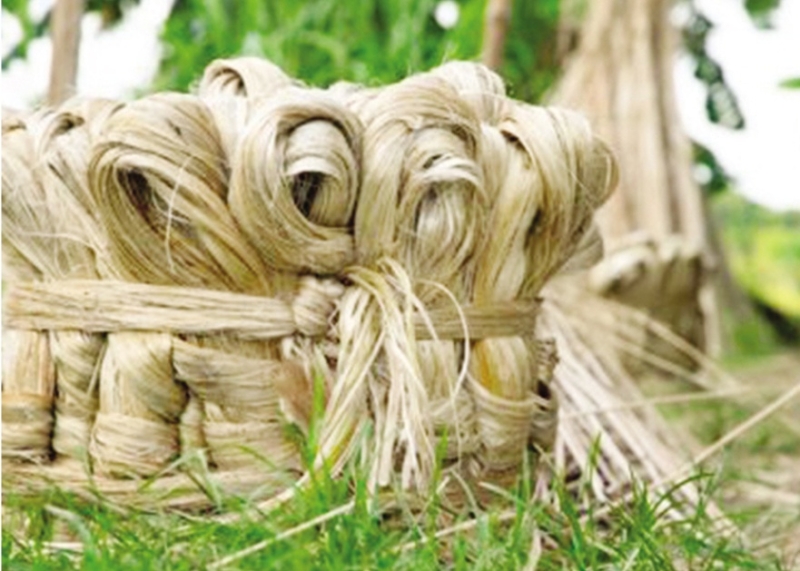- Bangladesh bounce back to level series as Tanvir bags five |
- UN Chief Condemns Russian Attacks, Warns of Nuclear Risks |
- Dhaka Urges Clear Outcome from Upcoming Rohingya Talks |
- Khulna falls short of jute output target for lack of incentives |
- UNRWA Report on the Humanitarian Crisis in Gaza & West Bank |
Khulna falls short of jute output target for lack of incentives

Jute once was called.the golden fibre of Bangladesh.
Khulna, Jul 5 - Once known as the golden hub of jute cultivation, Khulna is now witnessing a steady decline in jute farming as farmers lose interest due to persistent losses and the closure of local jute mills.
According to officials, last year the district met its jute cultivation target but this year production has fallen short, mainly due to the absence of government incentives to the jute growers.
Sources said while farmers were provided with seeds by the agriculture office last year, this year no such support was given. However, the Jute Department has offered incentives to farmers in two key jute-producing upazilas of the district.
According to the Department of Agricultural Extension (DAE), in the 2023-24 fiscal year, jute was cultivated on 1,447 hectares of land across nine upazilas of Khulna—1,442 hectares for Tosha jute and 5 hectares for Deshi jute.
For the current 2024-25 fiscal year, the target was set at 1,457 hectares but only 1,257 hectares have been cultivated so far, with 1,221 hectares for Tosha jute and 36 hectares for Deshi jute, achieving only 87% of the target.
Upazila-wise, this year jute was cultivated on 21 hectares in Rupsha, five hectares in Batiaghata, 46 hectares in Dighalia, nine hectares in Phultala, 796 hectares in Dumuria, 125 hectares in Terokhada, 252 hectares in Paikgacha, and three hectares in Koyra.
Mentionable, no jute has been cultivated in Dakop or metropolitan Daulatpur this year, whereas last year Dakop saw three hectares and Daulatpur one hectare under cultivation.
In contrast, in 2023-24, Rupsha recorded 36 hectares of jute cultivation, Batiaghata 15 hectares, Dighalia 30 hectares, Phultala one hectare, Dumuria 866 hectares, Terokhada 120 hectares, Paikgacha 372 hectares, and Koyra three hectares.
The average production target this year is set at 11.99 bales per hectare, totaling 2,743 metric tonnes.
Last season, around 1,000 farmers received one kg of jute seeds each as part of government incentives, but no such assistance was provided this year.
However, the Jute Department reported that in Paikgacha, 1,900 farmers received one kg of jute seeds and five kg of fertilizer each, along with training for 75 farmers. Dumuria farmers also received similar support under the same project.
Enamul Kabir, a Dumuria farmer, cultivated jute on five bighas of land this season but said he initially planned for 10 bighas, which was not possible due to excessive heat.
Paikgacha Upazila Agriculture Officer Enamul Hossain attributed the low cultivation to heatwaves during the planting season, while rain arrived too late to sow crops at the ideal time.
Dumuria’s Assistant Jute Development Officer said farmers were provided with seeds, fertilizers, and modern cultivation training under the advanced technology-based jute project.
District DAE Deputy Director Md Nazrul Islam blamed the lack of incentives and unfavorable environmental conditions as key reasons for missing the target.
He added that farmers are regularly advised on seed preservation, production, and modern cultivation techniques, with over 100 farmers trained in formal trading of jute. - UNB

